
Nikon COOLPIX cameras offer user-friendly digital photography, supported by comprehensive manuals in PDF format and mobile apps for easy access;
These guides assist users in maximizing their camera’s features, from initial setup to advanced shooting techniques, ensuring enjoyable picture-taking experiences.
Nikon provides various language options within these manuals, catering to a global audience and simplifying operation for all users.
What is the Nikon Coolpix?
The Nikon COOLPIX represents a long-standing series of digital cameras known for their compact design and ease of use. These cameras, detailed in extensive instruction manuals, cater to both beginner and enthusiast photographers.
COOLPIX models, like the P1/P2, L30, and A900, offer a range of features, from basic point-and-shoot functionality to advanced settings. Nikon provides downloadable PDF versions of these manuals, alongside the Nikon Manual Viewer 2 app.
These resources ensure users can fully understand and utilize their camera’s capabilities, enhancing their photographic journey. They are compatible with various devices.
Coolpix Camera Series Overview
The Nikon COOLPIX series encompasses a diverse range of digital cameras, each with a dedicated instruction manual available in multiple languages – English, German, French, Spanish, and more. Models like the L20/L19 and P500 demonstrate this variety.
Manuals detail specific features, ensuring users maximize their camera’s potential. Nikon’s commitment to support extends to digital PDF formats and mobile applications like the Nikon Manual Viewer 2.
These resources cover everything from battery care (EN-MH2) to understanding output specifications, providing comprehensive guidance for every COOLPIX user.

Getting Started
Nikon COOLPIX setup begins with confirming package contents, detailed in the manual, followed by charging and inserting the battery and memory card correctly.
Refer to your camera’s instruction manual for specific guidance.
Unboxing and Package Contents
Carefully unpack your Nikon COOLPIX camera and verify all listed components are present, as detailed in the included user manual. Typically, the package includes the camera body itself, a rechargeable battery, and a battery charger.
You should also find a USB cable for connecting to a computer, and potentially a strap for secure handling. Confirm the presence of any included software CDs or quick start guides.
The manual will provide a visual checklist, ensuring you haven’t missed anything essential. Retain the original packaging for potential warranty claims or future transport.
Charging the Battery
Before first use, fully charge the Nikon COOLPIX battery using the provided charger and a standard wall outlet. Connect the charger to a power source and then insert the battery, ensuring correct polarity as indicated.
The manual details the charging indicator light’s behavior – typically, it will illuminate red during charging and change to green when complete.
Avoid using third-party chargers, as they may damage the battery. Charging time varies, but generally takes several hours. Refer to your user manual for specific timings.
Inserting the Battery and Memory Card
Locate the battery compartment, usually on the bottom of the Nikon COOLPIX camera, and open it. Insert the charged battery, ensuring the contacts align correctly, until it clicks into place.
Next, find the memory card slot – often alongside the battery compartment. Insert a compatible SD card (or other specified type) in the correct orientation, until it locks.
The user manual provides diagrams illustrating proper insertion. Close both compartments securely before powering on the camera.

Basic Camera Operations
Nikon COOLPIX cameras feature intuitive controls and a menu system for adjusting settings. Manuals detail powering on/off, menu navigation, and selecting appropriate shooting modes.
Powering On/Off the Camera
To power on your Nikon COOLPIX, locate the power button, typically found on the top panel of the camera. Press it firmly; the LCD screen will illuminate, indicating the camera is active and ready for use.
Turning the camera off is equally straightforward. Press the power button again, and the screen will darken, confirming the camera has entered standby mode;
Important note: Some models feature an auto-power-off function to conserve battery life when the camera is inactive for a specified period. Refer to your specific COOLPIX model’s manual for details.

Always ensure the camera is fully powered off when not in use to prevent accidental battery drain.
Navigating the Menu System
Accessing the menu on your Nikon COOLPIX is typically done by pressing the ‘Menu’ button. This will display a series of tabs or icons representing different settings categories on the LCD screen.
Use the directional pad (or touchscreen, if equipped) to highlight desired menu options and press the ‘OK’ or ‘Select’ button to enter submenus.
Refer to your camera’s manual, often available as a PDF, for a detailed explanation of each menu item and its function.
The Nikon Manual Viewer app can also be helpful.
Navigate carefully and confirm changes before exiting.
Understanding Shooting Modes
Nikon COOLPIX cameras offer diverse shooting modes to suit various scenarios. Auto mode simplifies picture-taking, while Scene modes (portrait, landscape, sports) optimize settings for specific subjects.
Program mode (P) allows some user control over settings like ISO and white balance. Aperture priority (A) and Shutter priority (S) offer more advanced control.
Consult your camera’s manual – often found as a PDF online – to understand each mode’s functionality.
The Nikon Manual Viewer app can assist.
Experiment to find the best mode for your needs!
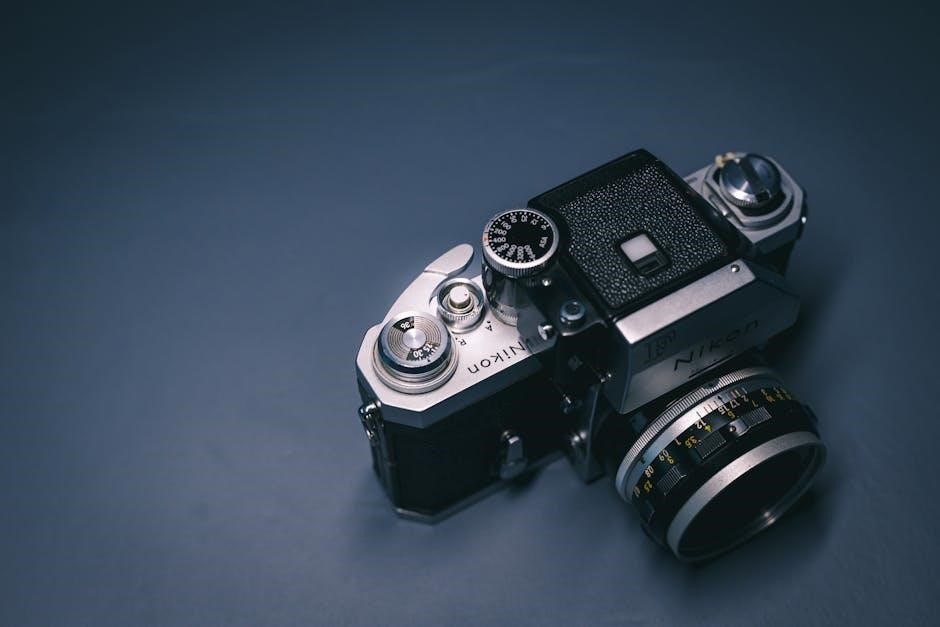
Shooting Photos
Refer to your Nikon COOLPIX manual for detailed guidance on focusing, zoom, and exposure settings to capture high-quality images effectively.
Master these techniques!
Focusing Techniques
Nikon COOLPIX cameras offer various focusing modes detailed in your manual. Auto-focus is convenient for general shooting, while manual focus provides precise control.
Explore face-priority AF for sharp portraits, and subject-tracking AF to maintain focus on moving subjects.
Utilize the focus lock function (AF lock) by half-pressing the shutter button to recompose your shot while maintaining focus on your intended subject.
Understanding these techniques, as explained in the manual, will significantly improve your image clarity and overall photographic results.
Experiment with different modes to find what works best for your specific shooting scenarios!
Using Zoom Functionality
Your Nikon COOLPIX camera’s zoom is controlled via the zoom lever surrounding the shutter button – consult your manual for specifics.
Digital zoom extends magnification beyond the optical zoom range, but may reduce image quality.
Optical zoom provides superior image clarity as it uses the lens to magnify the image.
Smoothly operate the zoom lever for gradual adjustments, avoiding abrupt changes during video recording.
Familiarize yourself with the zoom ratio indicated in your camera’s specifications within the manual for optimal results.
Adjusting Exposure Settings
The Nikon COOLPIX camera’s exposure settings control brightness and clarity; refer to your manual for detailed instructions.
Exposure compensation adjusts overall brightness, useful for backlit scenes or strong sunlight.
ISO sensitivity impacts image noise – higher ISOs are better in low light, but introduce more grain.
Explore scene modes for pre-set exposure settings tailored to specific shooting conditions.
Understanding these settings, as detailed in the manual, allows for creative control and optimized image quality.

Shooting Videos
Nikon COOLPIX cameras offer diverse video recording modes and resolutions, detailed in the manual.
Utilize the video zoom and explore audio recording options for enhanced video capture.
Video Recording Modes and Resolutions
Nikon COOLPIX cameras provide a selection of video recording modes to suit various needs, as detailed in your camera’s manual; These typically include options for standard definition and high definition (HD) recording, with resolutions like 720p or 1080p available.
Some models even support 4K UHD video capture for incredibly detailed footage.
The manual will explain frame rate options (e.g., 30fps, 60fps) and their impact on video smoothness. Understanding these settings allows you to optimize video quality for different playback scenarios, whether for sharing online or viewing on a larger screen. Explore the manual for specific resolution and frame rate capabilities of your particular COOLPIX model.
Using the Video Zoom
The Nikon COOLPIX camera’s manual explains how to utilize the video zoom function during recording. Unlike optical zoom, video zoom often employs digital zoom, potentially reducing image quality as it enlarges the image beyond its native resolution.
The manual will detail how to activate and control the zoom speed while filming, typically using the zoom lever or touchscreen controls.
Be mindful of excessive digital zoom, as it can introduce pixelation. Refer to your camera’s manual for recommended zoom levels to maintain acceptable video quality. Experiment to find the optimal balance between magnification and clarity.
Audio Recording Options
The Nikon COOLPIX camera manual details available audio settings for video recording. Many models feature a built-in microphone, with options to adjust recording levels for optimal sound quality.
Some cameras offer wind noise reduction to minimize unwanted background sounds, enhancing clarity. The manual will explain how to access and adjust these settings within the camera’s menu system.
External microphones may be compatible with certain COOLPIX models, providing professional-grade audio. Consult your camera’s manual for compatibility and connection instructions.
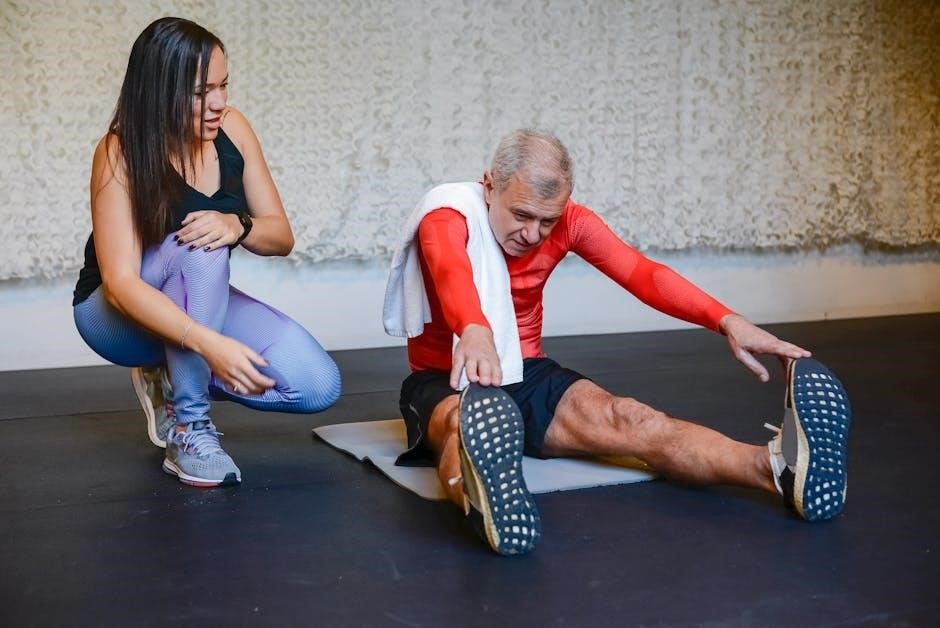
Advanced Features
The Nikon COOLPIX manual explains scene modes, flash controls, and image stabilization, allowing users to enhance creativity and capture high-quality photos.
Scene Modes Explained
Nikon COOLPIX cameras feature diverse scene modes, detailed within the manual, optimizing settings for specific shooting conditions. These pre-configured options simplify capturing ideal images in various environments.
Common modes include Portrait, Landscape, Sports, Night Portrait, and Party, each adjusting settings like exposure and white balance automatically.
The manual clarifies how each mode functions, enabling users to select the most appropriate setting for their subject and lighting. Understanding these modes unlocks creative potential, delivering professional-looking results without manual adjustments.
Experimenting with scene modes is encouraged to discover their impact on image quality and artistic expression.
Using the Flash Effectively
The Nikon COOLPIX camera manual details flash settings for optimal image illumination. Understanding flash modes – Auto, Red-eye Reduction, Fill-Flash, and Manual – is crucial for achieving desired results.
Auto flash automatically fires when low light is detected, while Red-eye Reduction minimizes red-eye effects in portraits.
Fill-Flash adds light to brighten shadows in bright conditions, and Manual allows full control over flash intensity.
The manual also explains flash range and potential limitations, ensuring users maximize flash functionality for clear, well-lit photographs.
Understanding Image Stabilization
The Nikon COOLPIX camera manual explains Image Stabilization (IS) as a vital feature for reducing blur caused by camera shake, especially in low light or when using zoom.
IS compensates for minor movements, resulting in sharper images and smoother videos.
The manual details different IS modes, such as Normal and Active, with Active providing enhanced stabilization during walking or running.
Understanding when and how to utilize IS, as outlined in the manual, significantly improves image quality and overall shooting experience.
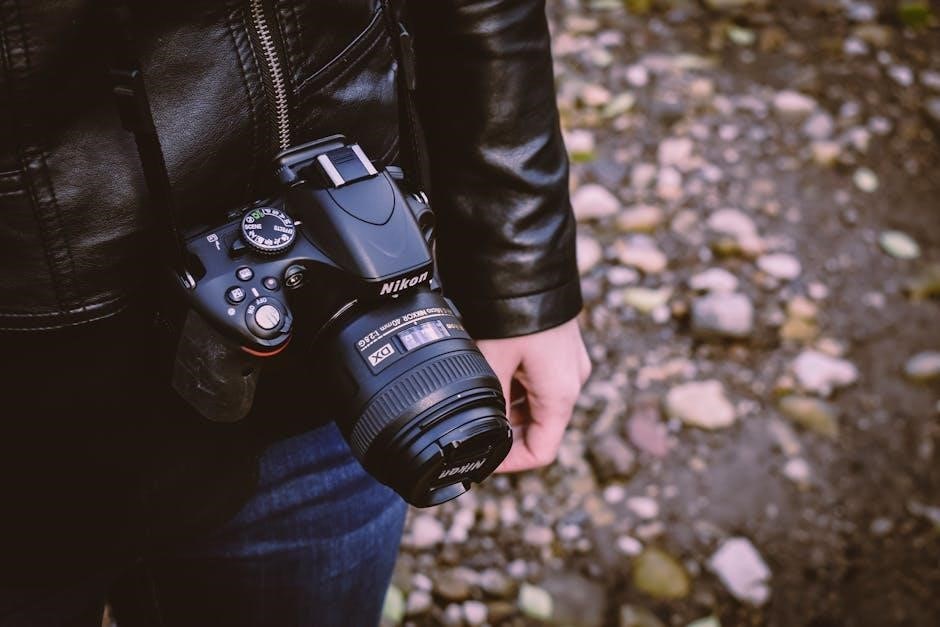
Connectivity and Transferring Images
The Nikon COOLPIX manual details image transfer via USB, Wi-Fi, and Bluetooth, utilizing Nikon’s mobile app for convenient wireless sharing.
PDF documentation guides setup and connection processes.
Connecting to a Computer via USB
Connecting your Nikon COOLPIX to a computer via USB allows for direct image transfer and potential camera control, as detailed in the camera’s manual.
First, ensure your camera is powered off. Use the supplied USB cable to connect the camera to a USB port on your computer.
Power on the camera; a connection screen should appear.
Your computer may automatically recognize the camera as a storage device, allowing you to browse and copy images;
Alternatively, you might need to select “MTP” or “PTP” mode on the camera’s display, as outlined in the manual, for proper recognition.
Refer to the manual for troubleshooting steps if the connection fails.
Wireless Transfer Options (Wi-Fi/Bluetooth)
Many Nikon COOLPIX cameras offer convenient wireless transfer via Wi-Fi and/or Bluetooth, detailed within the camera’s manual.
Utilize Nikon’s mobile app, Nikon Manual Viewer 2, for streamlined connectivity and image transfer to smartphones and tablets.
Enable Wi-Fi on your camera and follow the on-screen prompts to connect to your home network.
Once connected, you can transfer images directly or use remote camera control features.
Bluetooth offers a lower-power connection for smaller file transfers.
Consult the manual for specific pairing instructions and app compatibility details.
Using Nikon’s Mobile App
Nikon’s mobile app, such as Nikon Manual Viewer 2, enhances your COOLPIX experience, as detailed in the camera’s manual.
Download the app from your device’s app store and follow the pairing instructions within the app and on your camera.
The app enables wireless image transfer, remote camera control, and access to digital manuals.
Browse and download PDF versions of your camera’s manual directly within the app for offline access.
Control shooting settings, trigger the shutter, and view live previews on your smartphone or tablet.
Share photos instantly to social media platforms.
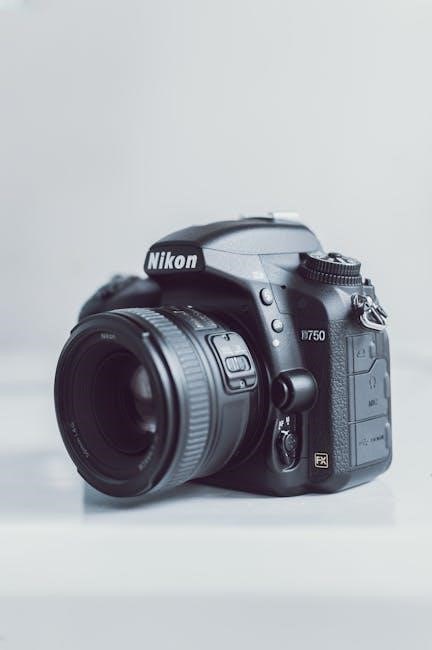
Troubleshooting Common Issues
Refer to your Nikon COOLPIX manual for solutions to problems like power failures, image quality concerns, or memory card errors.
The manual provides step-by-step guidance for resolving these common issues and ensuring optimal camera performance;
Camera Not Powering On
If your Nikon COOLPIX camera fails to power on, first verify the battery is fully charged and correctly inserted, as detailed in your manual.
Ensure the battery compartment is securely closed. Try a different, known-good battery if available. Consult the manual for specific battery type compatibility.
Check the power button for any obstructions or damage. If the issue persists, reset the camera by removing the battery and memory card for several minutes.
Refer to the troubleshooting section of your Nikon manual for further diagnostic steps and potential solutions, including contacting Nikon support.
Image Quality Problems
If experiencing poor image quality with your Nikon COOLPIX, consult the manual for optimal settings. Ensure the lens is clean, using a lens cloth as recommended. Check the image resolution setting; higher resolutions yield better quality.
Verify sufficient lighting conditions, as low light can introduce noise. Experiment with different shooting modes, like Scene modes, for specific scenarios.
Review the manual’s guidance on focus techniques to ensure sharp images. If issues persist, check the memory card for errors and consider formatting it.
Memory Card Errors
Encountering memory card errors? Your Nikon COOLPIX manual details troubleshooting steps. First, ensure the card is compatible with your camera model. Try re-inserting the card, confirming proper orientation. If the error persists, use the camera’s format function (refer to the manual).
A corrupted card may require formatting on a computer. Back up any existing images before formatting! Consider using a different memory card to isolate the issue.
Always eject the card safely from your computer to prevent data corruption.
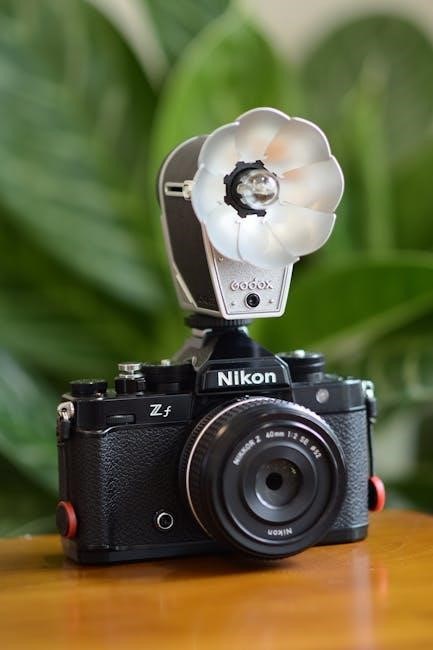
Maintaining Your Coolpix Camera
Regular cleaning of the lens and body, proper battery care, and keeping the firmware updated—as detailed in your manual—ensure optimal COOLPIX performance.
Cleaning the Lens and Body
To maintain optimal image quality, regularly clean your Nikon COOLPIX camera’s lens and body. Use a soft, dry microfiber cloth to gently remove dust and fingerprints from the lens surface.
For stubborn smudges, slightly dampen the cloth with lens cleaning solution – avoid applying liquid directly to the camera.
The camera body can be wiped down with a clean, dry cloth.
Avoid using harsh chemicals or abrasive cleaners, as these can damage the finish.
Refer to your camera’s manual for specific cleaning recommendations and precautions to ensure safe and effective maintenance.
Proper cleaning extends the life of your COOLPIX and preserves image clarity.
Battery Care and Storage
To maximize the lifespan of your Nikon COOLPIX battery, follow these guidelines. Only use Nikon-approved chargers and batteries, like the EN-MH2, designed specifically for your camera model.
Avoid extreme temperatures – do not leave the battery in direct sunlight or freezing conditions.
When storing for extended periods, charge the battery to approximately 50% before removing it from the camera.
Store batteries in a cool, dry place.
Consult your camera’s manual for detailed battery specifications and safety instructions.
Proper care ensures reliable performance.
Firmware Updates
Regularly check the Nikon website (imaging.nikon.com/support) for available firmware updates for your COOLPIX camera. These updates often improve performance, add new features, and fix potential bugs.
Download the latest firmware and follow the instructions in the camera’s manual carefully.
Typically, you’ll need a formatted memory card to transfer the update file.
Ensure the camera has sufficient battery power during the update process to prevent interruption.
Incorrectly installing firmware can damage your camera, so proceed with caution.
Updates enhance your camera’s capabilities.